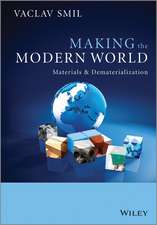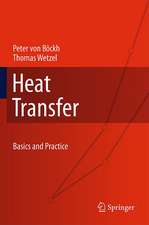Integral Foam Molding of Light Metals: Technology, Foam Physics and Foam Simulation: Engineering Materials
Autor Carolin Koerneren Limba Engleză Paperback – 11 noi 2010
| Toate formatele și edițiile | Preț | Express |
|---|---|---|
| Paperback (1) | 941.82 lei 6-8 săpt. | |
| Springer Berlin, Heidelberg – 11 noi 2010 | 941.82 lei 6-8 săpt. | |
| Hardback (1) | 946.55 lei 6-8 săpt. | |
| Springer Berlin, Heidelberg – 8 ian 2009 | 946.55 lei 6-8 săpt. |
Din seria Engineering Materials
- 18%
 Preț: 1390.89 lei
Preț: 1390.89 lei - 18%
 Preț: 1236.99 lei
Preț: 1236.99 lei - 24%
 Preț: 829.35 lei
Preț: 829.35 lei - 18%
 Preț: 1001.02 lei
Preț: 1001.02 lei - 20%
 Preț: 573.70 lei
Preț: 573.70 lei - 17%
 Preț: 490.23 lei
Preț: 490.23 lei - 18%
 Preț: 891.33 lei
Preț: 891.33 lei - 15%
 Preț: 644.95 lei
Preț: 644.95 lei - 18%
 Preț: 892.90 lei
Preț: 892.90 lei - 18%
 Preț: 1384.75 lei
Preț: 1384.75 lei - 18%
 Preț: 1002.61 lei
Preț: 1002.61 lei -
 Preț: 343.98 lei
Preț: 343.98 lei - 18%
 Preț: 997.09 lei
Preț: 997.09 lei - 18%
 Preț: 1106.00 lei
Preț: 1106.00 lei - 18%
 Preț: 1120.99 lei
Preț: 1120.99 lei - 15%
 Preț: 703.85 lei
Preț: 703.85 lei - 15%
 Preț: 658.05 lei
Preț: 658.05 lei - 18%
 Preț: 889.75 lei
Preț: 889.75 lei - 18%
 Preț: 946.55 lei
Preț: 946.55 lei - 18%
 Preț: 1396.43 lei
Preț: 1396.43 lei - 18%
 Preț: 1101.26 lei
Preț: 1101.26 lei - 17%
 Preț: 428.09 lei
Preț: 428.09 lei - 18%
 Preț: 1111.85 lei
Preț: 1111.85 lei - 18%
 Preț: 1588.67 lei
Preț: 1588.67 lei -
 Preț: 388.45 lei
Preț: 388.45 lei - 20%
 Preț: 566.87 lei
Preț: 566.87 lei - 18%
 Preț: 949.42 lei
Preț: 949.42 lei - 15%
 Preț: 631.72 lei
Preț: 631.72 lei - 15%
 Preț: 640.88 lei
Preț: 640.88 lei - 15%
 Preț: 635.47 lei
Preț: 635.47 lei - 18%
 Preț: 1233.20 lei
Preț: 1233.20 lei - 18%
 Preț: 1548.11 lei
Preț: 1548.11 lei - 18%
 Preț: 1126.03 lei
Preț: 1126.03 lei - 15%
 Preț: 638.11 lei
Preț: 638.11 lei - 15%
 Preț: 637.46 lei
Preț: 637.46 lei - 18%
 Preț: 1217.10 lei
Preț: 1217.10 lei - 18%
 Preț: 945.62 lei
Preț: 945.62 lei - 18%
 Preț: 948.61 lei
Preț: 948.61 lei - 18%
 Preț: 1224.54 lei
Preț: 1224.54 lei -
 Preț: 367.93 lei
Preț: 367.93 lei - 15%
 Preț: 639.25 lei
Preț: 639.25 lei - 15%
 Preț: 643.34 lei
Preț: 643.34 lei - 18%
 Preț: 955.08 lei
Preț: 955.08 lei - 15%
 Preț: 645.79 lei
Preț: 645.79 lei - 18%
 Preț: 1237.30 lei
Preț: 1237.30 lei - 18%
 Preț: 1114.34 lei
Preț: 1114.34 lei - 18%
 Preț: 1217.10 lei
Preț: 1217.10 lei
Preț: 941.82 lei
Preț vechi: 1148.56 lei
-18% Nou
Puncte Express: 1413
Preț estimativ în valută:
180.23€ • 189.51$ • 148.91£
180.23€ • 189.51$ • 148.91£
Carte tipărită la comandă
Livrare economică 17 aprilie-01 mai
Preluare comenzi: 021 569.72.76
Specificații
ISBN-13: 9783642088407
ISBN-10: 3642088406
Pagini: 236
Ilustrații: XII, 224 p. 143 illus.
Dimensiuni: 155 x 235 x 12 mm
Greutate: 0.34 kg
Ediția:Softcover reprint of hardcover 1st ed. 2008
Editura: Springer Berlin, Heidelberg
Colecția Springer
Seria Engineering Materials
Locul publicării:Berlin, Heidelberg, Germany
ISBN-10: 3642088406
Pagini: 236
Ilustrații: XII, 224 p. 143 illus.
Dimensiuni: 155 x 235 x 12 mm
Greutate: 0.34 kg
Ediția:Softcover reprint of hardcover 1st ed. 2008
Editura: Springer Berlin, Heidelberg
Colecția Springer
Seria Engineering Materials
Locul publicării:Berlin, Heidelberg, Germany
Public țintă
ResearchCuprins
Technology.- Integral Foam Molding Of Metals.- Structure and Properties.- Physics.- Physics of Foaming.- Evolution Laws.- Endogenous Stabilization.- Numerical Simulation.- Theoretical Approach.- Lattice Boltzmann Model for Free Surface Flow.- Lattice Boltzmann Model for Foam Evolution.
Textul de pe ultima copertă
The development of cost-effective techniques to produce metal parts with integrated cellular structure is the newly developed process of integral foam molding.
This book shows in three parts the technology, the fundamentals and the simulation models for the Integral Foam Molding of Light Metals
Part I: “Technology” shows for the first time that foaming of metals is possible by applying molding techniques very similar to polymer integral foam molding. It introduces and discusses in detail a low pressure and a high pressure process of foam molding.
Part II: “Physics” is devoted to the physics of foaming with special emphasis on the very short time scale which is characteristic for integral foam molding. Although very complex in detail, foam formation is shown to underlie simple evolution laws determined by the way how foam stabilization is realized.
Part III: “Numerical Simulation” presents a new lattice Boltzmann approach for the treatment of free surfaces is developed and applied on foam evolution problems. For the first time, the numerical simulation of foam evolution starting from nucleation until decay is accessible. The interplay between hydrodynamics, capillary forces, gravity and bubble coalescence processes leads to complex phenomena such as topological rearrangements, avalanches, drainage, etc. without further model assumptions.
This book shows in three parts the technology, the fundamentals and the simulation models for the Integral Foam Molding of Light Metals
Part I: “Technology” shows for the first time that foaming of metals is possible by applying molding techniques very similar to polymer integral foam molding. It introduces and discusses in detail a low pressure and a high pressure process of foam molding.
Part II: “Physics” is devoted to the physics of foaming with special emphasis on the very short time scale which is characteristic for integral foam molding. Although very complex in detail, foam formation is shown to underlie simple evolution laws determined by the way how foam stabilization is realized.
Part III: “Numerical Simulation” presents a new lattice Boltzmann approach for the treatment of free surfaces is developed and applied on foam evolution problems. For the first time, the numerical simulation of foam evolution starting from nucleation until decay is accessible. The interplay between hydrodynamics, capillary forces, gravity and bubble coalescence processes leads to complex phenomena such as topological rearrangements, avalanches, drainage, etc. without further model assumptions.
Caracteristici
Opens an avenue to develop cost-effective techniques of metal foam molding Contains the first approach for a usable simulation Shows for the first time it is shown that integral foaming of metals is possible









